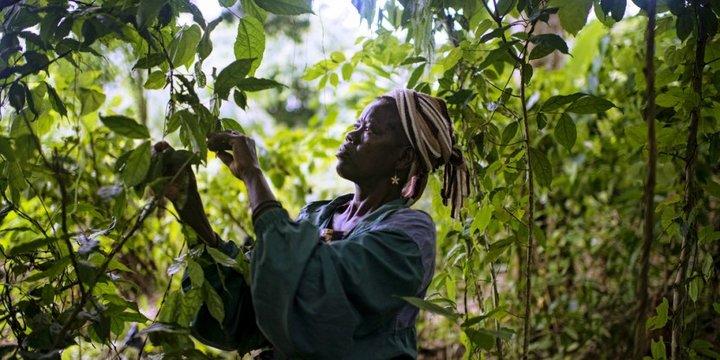Reconciling multiple forest uses in the Congo Basin

In their 2015 annual report, the CGIAR Research Program on Forests, Trees and Agroforestry highlights the achievements of Flagship 2, Management of Forest and Tree Resources, in research conducted on diversified forest management in the Congo Basin.
In their 2015 annual report, the CGIAR Research Program on Forests, Trees and Agroforestry (FTA) highlights the achievements of Flagship 2, Management of Forest and Tree Resources, in research conducted on diversified forest management. Below is an article originally published in the report, available to download on the FTA website.
A good example comes from the Congo Basin, the second largest expanse of tropical forest in the world. Multiple demands on its 200 million hectares of forests often lead to conflict among users. As some of the uses are informal or illegal, they are not accommodated within the framework of forest management administered by the State. Widespread timber concessions granted to industries compete with agriculture, hunting, small-scale logging and, it has been suggested, with the gathering of non-timber products by local people who live in or near the forests.
FTA research on forest uses by men and women in dozens of villages in Cameroon, Gabon and the Democratic Republic of Congo show that local people depend on forest foods, including both plants and animals.
Flagship 2 scientists analyzed the density and abundance of forest resources and found that extracting both industrial timber and forest foods from trees could be sustained from the same concession if users had clear guidelines and negotiated agreements to reduce conflict. Expanding the number of resources managed and extracted from concessions would increase the benefits per hectare as well as the number of beneficiaries.
Agriculture, chainsaw logging and hunting were identified as the main sources of conflict between villagers and timber industries. Once these were identified, the researchers looked at ways to resolve the disputes and estimated the costs of the trade-offs required. This last step was crucial as it gave stakeholders a clear idea of the costs and benefits associated with the implementation of a multiple-use scheme. It became clear that multiple-use forest management needs effective financial incentives. "Timber and non-timber products for different stakeholders can be obtained and sustained from the same concessions, when all agree on appropriate practices and arrangements," said Laura Snook, Coordinator of FTA's Flagship 2 and forestry researcher at Bioversity International.
Going forward, the researchers suggest that concessions should not be dedicated solely to timber exploitation, but be seen as part of a broader landscape for sustainable multiple resource-based development.
Further achievements in 2015
- Recommendations about concession boundaries have been used in the forest management plans in the Democratic Republic of Congo.
- At the 15th Conference of the Congo Basin Forest Partnership, the Central African Forests Commission (COMIFAC) ministers endorsed FTA recommendations on bushmeat.
- The work on social outcomes of Forest Stewardship Council (FSC) certification in the Congo Basin (with FTA's Flagship 5, Global governance, trade and investment) has been instrumental in showing that certified concessions have more positive impacts than non-certified concessions.
Download the CGIAR Research Program on Forests, Trees and Agroforestry Annual Report 2015 and visit their website foreststreesagroforestry.org
Bioversity International’s forest research contributes to the CGIAR Research Program on Forests, Trees and Agroforestry: Livelihoods, Landscapes and Governance.
